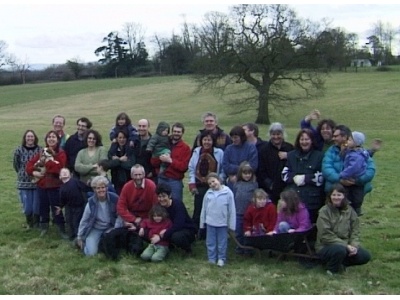Ok, so I haven’t made a post since vaguely organising my trip to the monkey sanctuary, and I’d just like to be clear that I made it back from Cornwall alright, and wasn’t murdered to death by backwoods cannibals. On the contrary, the trip was enjoyable and worthwhile. I experienced the varying smells of monkey poo at the Wild Futures sanctuary, along with being assaulted and laughed at by capuchins.
There were moments of loneliness and contemplation on the weekends and days off; especially after being violently mugged by a seagull in Looe, but for the most part, I found the place equal parts fascinating and rewarding. I learned a lot, and got to appreciate two weeks of vegan detox, with only the odd Cornish pasty to taint it.
Regarding the community, I felt accepted, but fringed myself somewhat due to social inadequacy. I made sure to be as social as I could, but even that still left me limited. Christmas night was my best showing, as everybody felt free to quaff from Bacchus’s chalice; not least of all me.
It’s such a cliche to say I ‘fell in love with the place,’ and I don’t think that would be the case anyway, but I certainly got close. I loved the work, the place and the surroundings. It really was fantastic. The only thing that spoiled it for me was the people; at times it felt like living with a dozen of the worst university housemates I’ve known.
During the new year festivities, I was again able to grease the wheels of social interaction with the folks at Trelay in north Cornwall, thanks to some of the finest libations I have had the pleasure to imbibe, resulting in another thoroughly enjoyable time. I was immediately impressed by this community’s decency when a few members arrived to pick me up from the sanctuary, nearly fifty miles to the south.
I learned a lot from the community’s only remaining founder, Jackie, who really showed me what I needed before I could be truly happy in such a place. The key, it seems, is to make oneself as socially approachable as possible, something that is far from natural for me. So it seems that no matter how much I admire and enjoy them, I will never be comfortable in a community until I can overcome my social anxieties.
As we approach the end of this project, I have one community left to visit and film at. ‘Grow Heathrow’ is a communal squat in Sipson, a small village right next to the airport, set up four years ago to protest the building of another runway. I have already been for a preliminary visit, but will return tomorrow in the hopes of getting more footage and interviews with the residents.
I’m very tired, both in general, and of the project, and I just want the editing to be done now. I have nearly finished with the monkey sanctuary, to my satisfaction, leaving Trelay and Heathrow to finish in the next week.
Please lord, take me now…









